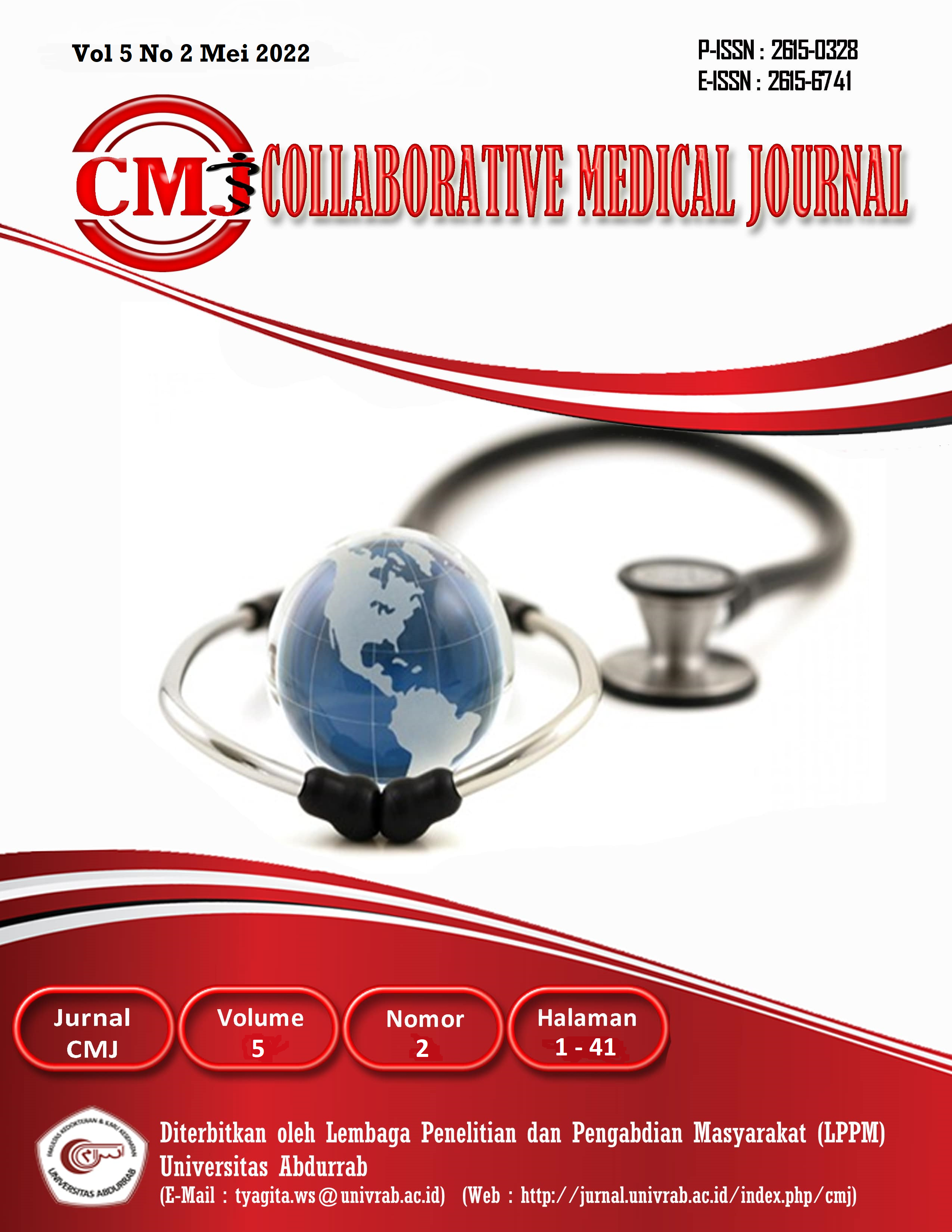PENGARUH PEMBERIAN SUSU KEDELAI TERHADAP TEKANAN DARAH PASIEN HIPERTENSI DI WILAYAH PUSKESMAS GARUDA KECAMATAN MARPOYAN DAMAI
Abstract
Hypertension is a health problem which one of the main concerns even in worldwide since this disease is a significant risk factor that leads to cardiovascular diseases such as heart attack, heart failure, stroke, and kidney disease. Hypertension is divided into two types based on the cause, primary hypertension and secondary hypertension. Some treatments that help lower blood pressure are by using drugs (pharmacotherapy) or by way of lifestyle modifications. Soybean (Glycine Max) is a type of functional food that contains nutrients such as isoflavones, saponins, lecithin and phytosterols which reduce the risk of cardiovascular disease. This study aims to analyze the effect of giving soy milk on blood pressure in hypertensive patients. This research method used a pretest-posttest design with a control group design. The sample in this study used a purposive sampling technique, the maximum size of the subjects in the study was 30 people. The results of the study in the intervention group showed that there was an effect of giving soy milk on blood pressure in hypertensive patients before and after with systolic blood pressure p=0.000 (p<0.05) and diastolic blood pressure p=0.002 (p<0.05).
References
[2] Aryantiningsih, D. S. & Silaen, J. B. (2018) “Kejadian Hipertensi Pada Masyarakat Di Wilayah Kerja Puskesmas Harapan Raya Pekanbaru,” Jurnal Ipteks Terapan, 12(1), pp. 64–77.
[3] Karim, N. A., Onibala, F. and Kallo, V. (2018) “Hubungan Aktivitas Fisik Dengan Derajat Hipertensi Pada Pasien Rawat Jalan Di Wilayah Kerja Puskesmas Tagulandang Kabupaten Sitaro,” Jurnal Keperawatan, 6(1), pp. 1–6.
[4] Sartik, S., Tjekyan, R. S. and Zulkarnain, M. (2017) “Risk Factors And The Incidence Of Hipertension In Palembang,” Jurnal Ilmu Kesehatan Masyarakat, 8(3), pp. 180–191.
[5] Purwono, J. et al. (2020) “Pola Konsumsi Garam dengan Kejadian Hipertensi Pada Lansia,” Jurnal Wacana Kesehatan, 5(1), pp. 531–542.
[6] Handayani F. et al. (2017) “Pengaruh Pemberian Susu Kedelai Terhadap Tekanan Darah Pasien Hipertensi Di Rumah Sakit Islam Jakarta Pondok Kopi,” Ilmu Gizi Idonesia, 01(01), pp. 19–27.
[7] Nurhayati, Kusumadewi, S. & Miladiyah, I. (2016) “Sistem Pakar Pemilihan Obat Antihipertensi Dan Interaksi Obat Atau Makanan,” INFOKES, 6(1).
[8] Prasanti, D. (2017) “Peran Obat Tradisional Dalam komunikasi Terapeutik Keluarga di Era Digital,” Jurnal Komunikasi, 3(1), pp. 17–27.
[9] Bustanussalam (2016) “Pemanfaataan Obat Tradisional (Herbal) Sebagai Obat Alternatif,” BioTrends, 7(1), pp. 20–25.
[10] Putri, B. M. and Nofia, Y. (2020) “Minuman Berbahan Dasar Kedelai Sebagai Antihipertensi”, nutrire Diaita, 12(1).
[11] Nuraini, B. (2015) “Risk Factors of Hypertension,” J Majority, 4(5), pp. 10–19.
[12] Amanda, D. and Martini, S. (2018) “The Relationship between Demographical Characteristic and Central Obesity with Hypertension,” Jurnal Berkala Epidemiologi, 6(1).
[13] Liu, X. X. et al. (2012) “Effect of soy isoflavones on blood pressure: A meta-analysis of randomized controlled trials,” Nutrition, Metabolism and Cardiovascular Diseases, 22(6), pp. 463–470.
Copyright (c) 2022 Collaborative Medical Journal (CMJ)

This work is licensed under a Creative Commons Attribution-NonCommercial-ShareAlike 4.0 International License.
1. Copyright of all journal manuscripts is held by the Collaborative Medical Journal (CMJ)
2. Formal legal provisions to access digital articles of electronic journal are subject to the provision of the Creative Commons Attribution-ShareAlike license (CC BY-NC-SA), which means that Collaborative Medical Journal (CMJ) is rightful to keep, transfer media/format, manage in the form of databases, maintain, and publish articles.
3. Published manuscripts both printed and electronic are open access for educational, research, and library purposes. Additionally, the editorial board is not responsible for any violations of copyright law.
licensed under a Creative Commons Attribution-ShareAlike 4.0 International License.
 PDF
PDF
 Abstract views: 377
Abstract views: 377
 downloads: 338
downloads: 338

 :
:




